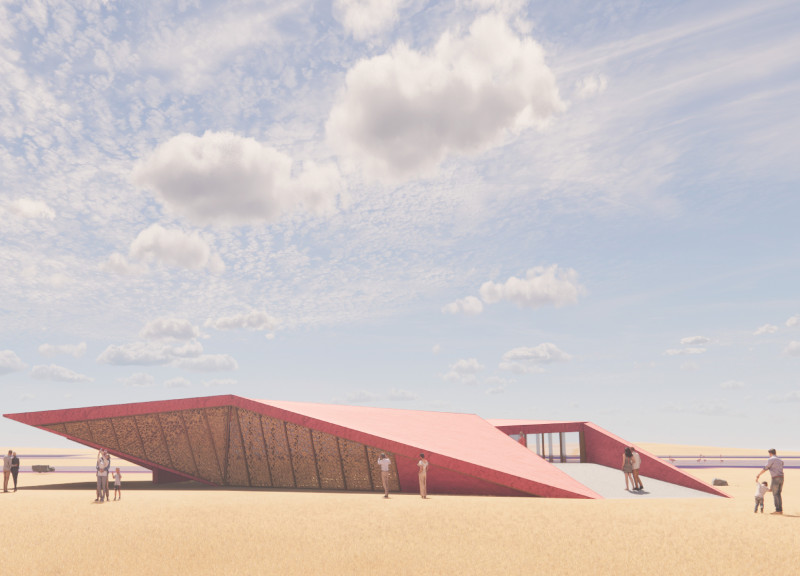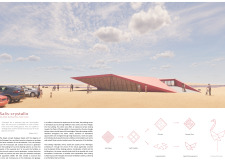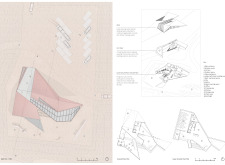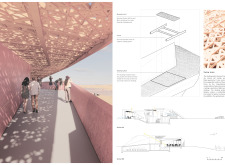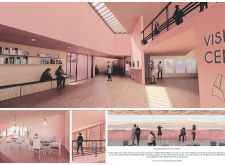5 key facts about this project
The Abu Dhabi Wetland Park Visitor Center is located in the Al Wathba Wetland Reserve, serving as a space for visitors to connect with the region’s rich ecosystems, particularly its famous flamingo populations. The design reflects themes of resilience and adaptation found in nature. The visitor center aims to enhance public understanding of these habitats through an architectural approach that mirrors ecological processes.
Architecture Concept
The design takes inspiration from the unique forms and behaviors of flamingos. Elements borrowed from the microscopic structures of salt crystals inform both the building's shape and its shading systems. This relationship between architecture and nature promotes awareness of the local wildlife and provides a context for visitors to appreciate the environment they are exploring.
Spatial Organization
The layout emphasizes a guided journey, featuring various entry points and changes in elevation that facilitate thematic experiences throughout the center. An expansive terrace is positioned to provide broad views of the wetlands, encouraging close observation of wildlife. The design includes flexible classrooms and interactive study areas, offering opportunities for different types of educational programs.
Materiality and Sustainability
Materials play an important role in the overall design. The visitor center features robust pigmented concrete alongside delicate timber shading systems. This combination strikes a balance between durability and visual appeal, allowing the structure to withstand local climate conditions. Sustainable practices are woven into the design, with features that limit heat gain and improve natural ventilation, promoting a comfortable environment for visitors.
Design Detail
One noteworthy aspect is the shading system. Inspired by the forms of salt crystals, it offers vital protection from the sun while creating interesting patterns of light and shadow. This design element enhances the experience for visitors as they move through the center, fostering a deeper appreciation for the interplay between built and natural environments.


